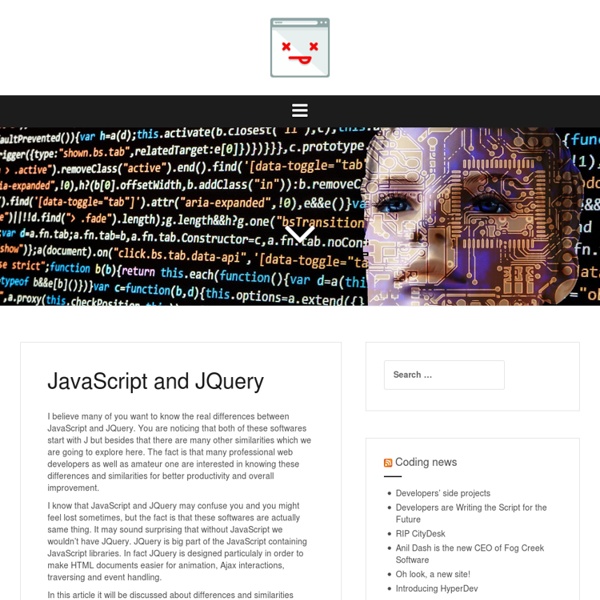



jQuery Stick ‘em: Make Content Sticky on Scroll, to a Point Over time, we've been adding some additional pieces of flair to the Viget site. The most recent addition was on the invidual work pages. We have large process sections where we illustrate a part of a project's process with several images and a block of text. The problem: some of those images were very tall. Checking username availability with ajax using jQuery Checking username availability with ajax using jQuery The time when username availability is checked after the page is normaly processed is long way behind us. Google has it, Yahoo has it and many many more sites have it, ajax username availability checker. So in this tutorial we will make an ajax username availability checker powered with jQuery. What are we making here?
Apprise - The attractive alert alternative for jQuery The initial release of Apprise has been a major success and is often what this site is most commonly associated with. As far as I've been able to track, Apprise has been downloaded over 23,000 times and has been mentioned in over 46,000 blogs. Which is fantastic, especially for something that I've never been very proud of. I've wanted to update, and change the UI, of this for over a year now. Time has finally permitted and it's, finally, ready.
Yannis Chatzikonstantinou / Freetile.js Freetile is a plugin for jQuery that enables the organization of webpage content in an efficient, dynamic and responsive layout. It can be applied to a container element and it will attempt to arrange it's children in a layout that makes optimal use of screen space, by "packing" them in a tight arrangement. Freetile has been the layout engine behind Assemblage and Assemblage Plus for almost two years, and now it becomes available as an independent Open Source project. Features How to Add a Calendar Date Picker to a Form with jQuery Buuuut, aren’t exactly supported yet One of the best features coming to HTML5 forms is the built in feature of a ‘date picker’. We’ve all used these before, on hotel or airline booking forms. You use the mini calendar to choose you date, which then gets added into the field. This is starting to be supported in some browsers that support HTML5, without using any javascript. The problem is that currently not all browsers support this feature, and the ones that do have very different ways of supporting it.
Ajax Events Ajax requests produce a number of different events that you can subscribe to. Here's a full list of the events and in what order they are triggered. There are two types of events: Local Events These are callbacks that you can subscribe to within the Ajax request object, like so: Global Events jQuery Ajaxy - Apricots About jQuery Ajaxy allows you to easily upgrade your web site into a full featured Ajax web application. Anyone who has tried to do this themselves would no doubt have spent countless hours debugging tedious javascript ajax requests, trying to figure out how to get ajax pages bookmarkable and working with back and forward buttons, or even struggled to add javascript effects to help manage your pages. jQuery Ajaxy was developed to solve all these problems, as well as some you may have never encountered such as; How do I keep my page indexable by Search Engines while making it an Ajax Application, How do I keep my site accessible to those who have javascript disabled? How I ensure I send the correct page back to the browser?
An Example of Using the jQuery Validation Plug-in Introduction This article presents an example of using the jQuery validation plug-in. Background Demos jQuery UI offers a combination of interaction, effects, widgets, utilities, and themes designed to work well together or on their own. Play with the demos, view the source, build a theme, read the API documentation and start using jQuery UI today. Interactions Interactions add basic mouse-based behaviors to any element. Update to jQuery Visualize: Accessible Charts with HTML5 from Designing with Progressive Enhancement Posted by Maggie on 03/12/2010 Topics: accessibility dwpe book Tiny Circleslider: A lightweight circular carousel for jQuery What is it? Tinycircleslider is a circular slider / carousel. That was built to provide webdevelopers with a cool but subtle alternative to all those standard carousels. Tiny Circleslider can blend in on any wepage.